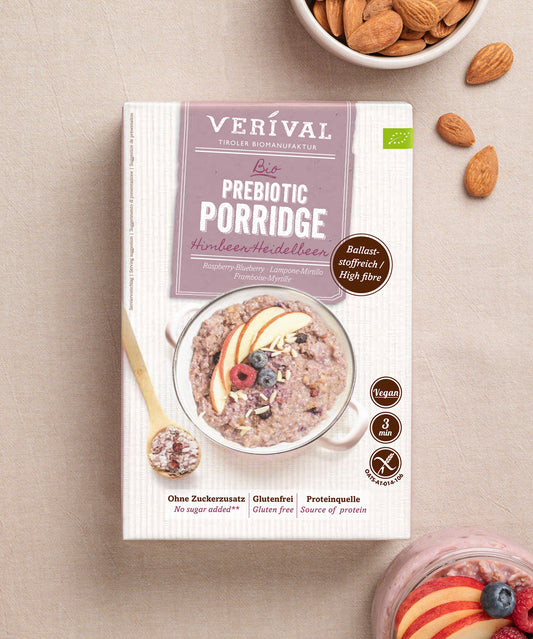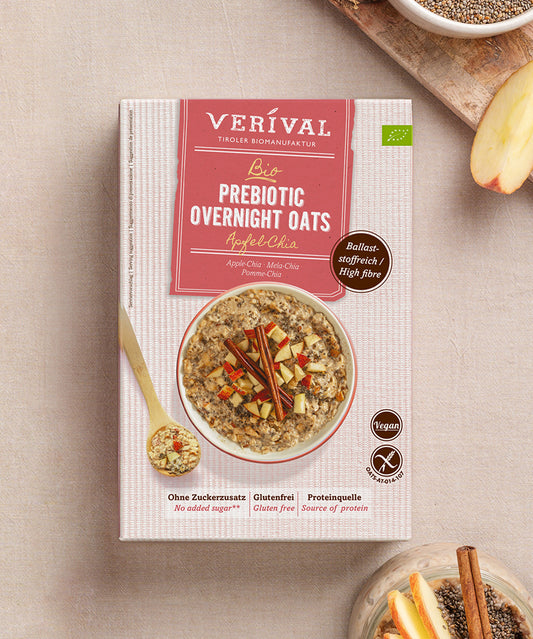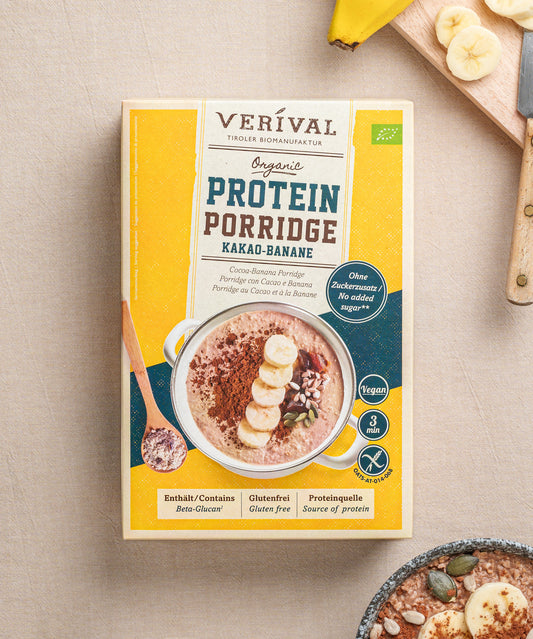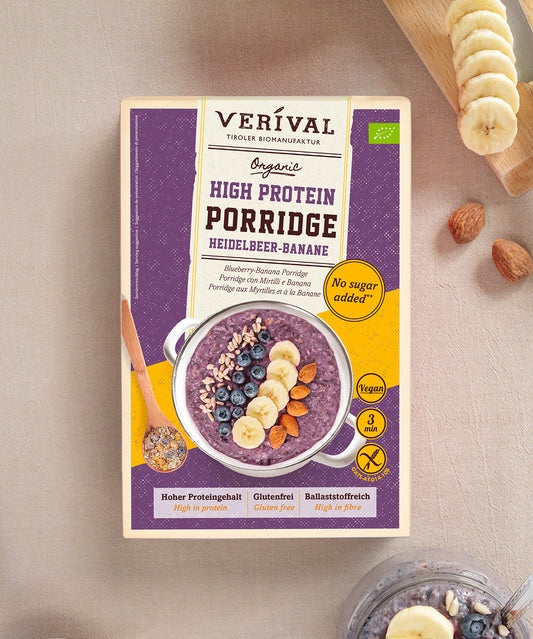Anyone who has ever tried to gain new energy, live healthier and maybe even lose a few pounds by eating a certain way knows that it is not that easy to adopt healthy eating habits in the long term.
The good will is there and the first hurdle has been overcome, but ultimately the plan fails step by step after a few weeks of discipline.
To give you new courage for healthy eating and to support you in your plans, you can find out everything you need to know about changing your diet and how you can celebrate long-term success with healthy eating here.
What are the effects of a change in diet?
To get a better understanding of what a change in diet involves, you can compare your body to a car. Your food is the fuel for your body, and your digestion is the engine. If you constantly fill up your car with junk, it will break down eventually. Just as a car's performance slowly declines, your body will also slow down and become less agile if you constantly feed it unhealthy foods.
However, if you give your body healthy, unprocessed food, it will be bursting with energy and you will feel fit and healthy. Changing your diet will bear fruit!
A tip: Do you want to lose weight? Changing your diet is not only healthy for your body, but can also help you lose weight. With the help of long-term changes to your habits and the tips that we provide, it is possible to achieve your desired weight loss.
Healthy breakfast from VERIVAL
What does healthy eating look like?
There is no generally valid definition for switching to or for healthy eating. However, one thing is clear: eating a balanced diet is important.
We speak of a balanced diet when the body is supplied with a sufficient amount of micro and macronutrients. So if you are planning to change your diet, you should at least have a rough knowledge of the basics of nutrition. Eating healthily also means knowing about nutrition and how to change your diet and take care of your body.
What are macronutrients?
Macronutrients include carbohydrates, protein and fat. They form the building blocks of our food and provide us with energy. The energy we supply our body with food is measured in calories. To be more precise, the original definition of calories was the unit of measurement of the amount of heat needed to heat 1 gram of water by 1 degree Celsius.
According to the Austrian Nutrition Society, a healthy distribution of macronutrients is as follows:
- Carbohydrates: At least 50% of your daily calorie intake should come from carbohydrates.
- Protein: The protein percentage should be 8-10% of your total daily calorie intake.
- Fat: The daily requirement for fat is about 30% of the total calories consumed.
When eating, it is important to make sure that you get the macronutrients from healthy, good sources.
A tip: It is therefore best to cover your daily requirement of carbohydrates with polysaccharides or complex carbohydrates such as vegetables, whole grain products or the all-rounder oats. While complex carbohydrates (e.g. oats) keep you full for a long time and keep your blood sugar level constant, simple carbohydrates do exactly the opposite. In addition, complex carbohydrates, such as oats, are very healthy because they are high in fiber and help the body lose weight by keeping you feeling full for longer.
When it comes to protein, it is important to combine plant and animal protein in a clever way. This way, your body is supplied with all the important amino acids through the food you eat.
When it comes to fat, you should get as much as possible of it in the form of unsaturated fatty acids in your body. These include, for example, omega-3 fatty acids. They help you to lower your blood lipid levels, especially the “bad” LDL cholesterol.
On the other hand, you should include saturated fatty acids less often in your eating habits when changing your diet, because they raise your cholesterol level. The “bad” LDL cholesterol value in the body rises and so does the risk of cardiovascular disease.
What are micronutrients?
When we talk about micronutrients, we are talking about vitamins and minerals. They are essential for human life and should ideally be included in your diet every day.
Since they are found mainly in fruit and vegetables, the German Nutrition Society recommends eating at least five portions of fruit and vegetables a day. Specifically, that's 400 grams of vegetables and 250 grams of fruit.
In addition, fruit and vegetables can help you lose weight because these foods have comparatively few calories per 100 grams. In other words, they have a high volume, so in the right nutritional combination, they also fill you up and are healthy and essential for the body.
How does the change in diet work?
Although it is entirely possible that you will lose weight by changing your diet, strictly speaking it is not a diet. It is more about replacing foods step by step with healthier alternatives and thus establishing healthy eating habits and a healthy diet permanently.
A diet as a change in diet is often not the right approach. Diets do have the advantage of radically changing habits within a few days. This is why it is also possible for the body to change externally in a short period of time.
Diet trends, such as the low-carb diet, the zero-sugar diet, the protein diet or interval fasting, will always remain more or less present. However, if you want to make long-term changes to your diet, these short-term fad diets are not the way to go. In addition, some diets are not designed to promote good health, but rather to lose weight quickly in the shortest possible time. However, various interval fasting plans and methods can also be used long term.
Before you start changing your diet, you should ask yourself why you want to eat healthier. What is your goal?
Bikini season is just around the corner, your Instagram feed is overflowing with pictures of healthy food, your colleague has just started her base diet, the beginning of the year... There are many reasons that motivate us to change our diet.
The question is: do you really want to? Really want to, with all the consequences?
There is no shame in admitting that the motivation for a healthy diet comes more from outside and is not really present within you. In fact, being honest about this can save you a lot of frustration. Because if you don't want to change your diet at all, you will most likely find it difficult to successfully implement a change in your diet.
If you know your goals and are sure that you want to make your diet healthy on your own initiative, then read on, because with our three steps you will create a solid basis for a long-term successful change in diet:
Step 1: Question your eating habits
The first step in a successful, healthy change in diet is to become aware of your own eating habits and to question them.
Often, habits become so routine that we no longer question them and recognize them as unhealthy. That's why it's not so easy to integrate new eating habits into your healthy diet and leave your usual diet behind over time.
Here's a tip: As a first step, it's best to write down what foods you eat and in what quantities. Observe yourself for a few days and pay attention to the little things. For example, how much sugar do you put in your coffee? Do you “need” a chocolate bar after every meal? And what about sodas?
This way, you'll discover what unhealthy eating habits have crept into your diet over time and where you can find healthier new alternatives.
Step 2: Set yourself small goals
Even if you are now full of motivation to change your diet and would like to do everything right straight away, take your time. Usually, an approach that is too radical can quickly lead to frustration and you may fall back into old habits.
Instead, it's better to set small goals and gradually replace your usual foods with healthier alternatives. Once you've achieved one goal and feel comfortable with it, move on to the next. Give your body and mind enough time!
Go over your eating habits from step 1 again and think about how you can make them healthier. This will help you find your way to a successful change in diet, step by step.
Try out new things: for example, start drinking soft drinks only at the weekend or resolve to cook a new, healthy recipe once a week. Cooking for yourself can help you quickly build up more knowledge about nutrition.
We can help you, especially when it comes to a healthy breakfast. How about our oatmeal porridge with berries as your first healthy breakfast recipe? Since a warm breakfast is already at our body's operating temperature, it is considered easier to digest and is therefore healthier for the body. We only use natural ingredients for the porridge.
Never cooked porridge yourself before? Don't worry, with our recipe, nothing can go wrong. Cooking porridge is easy!
Step 3: Plan your meals
To avoid aimlessly wandering the aisles while shopping, make a plan in advance.
Think about what you want to eat for the next week and shop accordingly. To make it easier for you, it helps to create a meal plan. Simply write down your planned meals and the food you need for them, and you'll have a ready-made shopping list. To make this step easier for you, we have created a template for the weekly plan that you can download here:
Don't forget to plan delicious, healthy snacks too.
When planning your meals, the aim is to find new, healthy alternatives week after week for the foods you are used to, or to cook completely new dishes.
Our table below should give you a few ideas of which foods you can gradually replace with healthier options – it can also help you lose weight:
| Food | Alternative foods |
| sweetened breakfast cereals, chocolate pops, cornflakes, sweetened muesli | Muesli and porridge without added sugar, homemade Bircher granola |
| Wheat noodles | Whole-wheat pasta, zucchini noodles, pasta alternatives from legumes such as lentils or chickpeas |
| white rice, couscous | Millet, quinoa, wild rice |
| French fries, croquettes, fried potatoes | Baked potatoes, boiled potatoes |
| white bread and pastries, croissants | Wholemeal pastries and bread, spelt pastries and bread |
| Lemonade, fruit juice | freshly squeezed juice, lemon water, unsweetened fruit tea |
| Whole milk chocolate | Dark chocolate |
| Chips, popcorn, salt sticks | Vegetable sticks |
| Ice cream | Frozen yoghurt, vegan chocolate nicecream with hazelnuts |
| Whole milk | Semi-fat milk, plant-based drinks |
| white sugar | Birch sugar, coconut blossom sugar |
| Salami, bacon, extra sausage or mortadella | Turkey breast, smoked ham |
| Fish fingers, herring, mackerel | steamed fish, saithe |
Also, make sure to include as much fresh and unprocessed food as possible in your diet. The more processing a product undergoes, the more additives and flavor enhancers it contains. Which in turn is not so healthy for the body.
Ready meals that appear healthy at first glance often contain preservatives, colorings, and stabilizers.
To avoid ready meals, you can try our recipes for different types of porridge, homemade granola or Bircher muesli!
Your VERIVAL breakfast made from the best organic ingredients
Do you already know your BMI?
With the Verival BMI calculator you can quickly and easily calculate your BMI. It doesn't matter whether you want to lose weight, just do something for your health or are currently in muscle-building training. The body mass index is often the first measurement that shows you where your body weight stands.
Here you can calculate your BMI ( body mass index ) in a few seconds and find out more about this value.
























